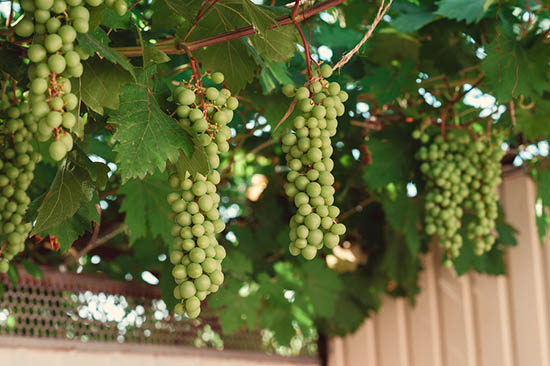Grow Your Own Summer Wine Tree
Grow Your Own Summer Wine Tree
The Summer Wine Tree (Physocarpus opulifolius 'Summer Wine') is a beautiful and versatile shrub that is perfect for adding color and interest to your garden. It is known for its striking red-purple foliage, which turns a brilliant scarlet in the fall. The Summer Wine Tree also blooms in the summer with clusters of small white flowers that are followed by red-purple seedheads.
If you are looking for a low-maintenance shrub that is easy to grow, the Summer Wine Tree is a great option. It is drought-tolerant and can withstand a wide range of soil conditions. It is also deer-resistant, so you can enjoy its beauty without worrying about the animals eating it.
How to Grow a Summer Wine Tree
The Summer Wine Tree is best planted in the spring or fall. Choose a location that receives full sun or partial shade. The soil should be well-drained and fertile.
Dig a hole that is twice the width of the root ball of the plant. Add a layer of compost or manure to the bottom of the hole. Place the plant in the hole and backfill with soil. Water the plant thoroughly.
Water the Summer Wine Tree regularly, especially during the first year after planting. Mulch around the plant to help retain moisture.
The Summer Wine Tree does not need to be pruned often. However, you can remove any dead, damaged, or diseased branches in the spring. You can also prune the plant to shape it or to keep it from getting too large.
Caring for a Summer Wine Tree
The Summer Wine Tree is a low-maintenance shrub, but there are a few things you can do to keep it healthy and looking its best.
- Water regularly, especially during the summer.
- Mulch around the plant to help retain moisture.
- Fertilize the plant in the spring with a balanced fertilizer.
- Prune the plant as needed to shape it or to keep it from getting too large.
Problems with Summer Wine Trees
The Summer Wine Tree is generally a very healthy plant, but there are a few problems that can occur.
- Leaf spot: This is a fungal disease that can cause brown or black spots on the leaves. To treat leaf spot, you can use a fungicide.
- Powdery mildew: This is another fungal disease that can cause a white powdery coating on the leaves. To treat powdery mildew, you can use a fungicide or simply increase the airflow around the plant.
- Deer: Deer can be a problem for Summer Wine Trees, as they will eat the leaves. To protect your plant from deer, you can use a fence or repellent.
Conclusion
The Summer Wine Tree is a beautiful and versatile shrub that is easy to grow. It is a great addition to any garden and will provide you with years of enjoyment.
If you are looking for a beautiful and easy-care shrub to add to your landscape, then you should consider the Summer Wine tree. This North American native plant features dark purple foliage with pale pink blooms, making it a striking addition to any garden. Summer Wine trees are also relatively pest- and disease-resistant, so they require very little maintenance.
If you are interested in learning more about Summer Wine trees, I recommend visiting Garden Wiki. This website provides comprehensive information about the plant, including its care requirements, planting tips, and pest and disease management. You can also find photos and videos of Summer Wine trees in bloom, so you can get a better idea of how they look in your garden.
FAQ of summer wine tree
Question 1: What is a summer wine tree?
Answer: A summer wine tree is a type of flowering tree that produces clusters of small, fragrant flowers in the summer. The flowers are often yellow, orange, or pink, and they have a sweet, wine-like scent. The tree is native to China, but it is also grown in other parts of the world, including the United States.
Question 2: What are the benefits of planting a summer wine tree?
Answer: There are many benefits to planting a summer wine tree. The tree is beautiful and adds a touch of elegance to any landscape. It is also a good source of nectar for bees and butterflies, which helps to improve pollination. The flowers can be used to make wine, jelly, or syrup. The tree is also relatively easy to care for and can tolerate a variety of soil types.
Question 3: Where should I plant a summer wine tree?
Answer: Summer wine trees should be planted in full sun. They prefer well-drained soil, but they can tolerate some clay. The tree is hardy in USDA zones 5-9.
Question 4: How do I care for a summer wine tree?
Answer: Summer wine trees are relatively easy to care for. They need to be watered regularly, especially during the first year after planting. The tree should be fertilized in the spring with a balanced fertilizer. The tree should be pruned in the winter to remove dead or diseased branches.
Question 5: What are some common problems with summer wine trees?
Answer: The most common problems with summer wine trees are pests and diseases. The tree is susceptible to aphids, scale, and spider mites. The tree can also be affected by powdery mildew and black spot.
Image of summer wine tree
5 different images of "summer wine tree" from Pinterest:
- A wooden wine tree with bottles of red, white, and rosé wine hanging from the branches.

- A living wine tree with grape vines growing up a trellis.

- A wire wine tree with small wine glasses hanging from the branches.

- A paper wine tree with colorful leaves and grapes.

- A digital wine tree with a photorealistic rendering of a wine bottle and grapes.

Post a Comment for "Grow Your Own Summer Wine Tree"